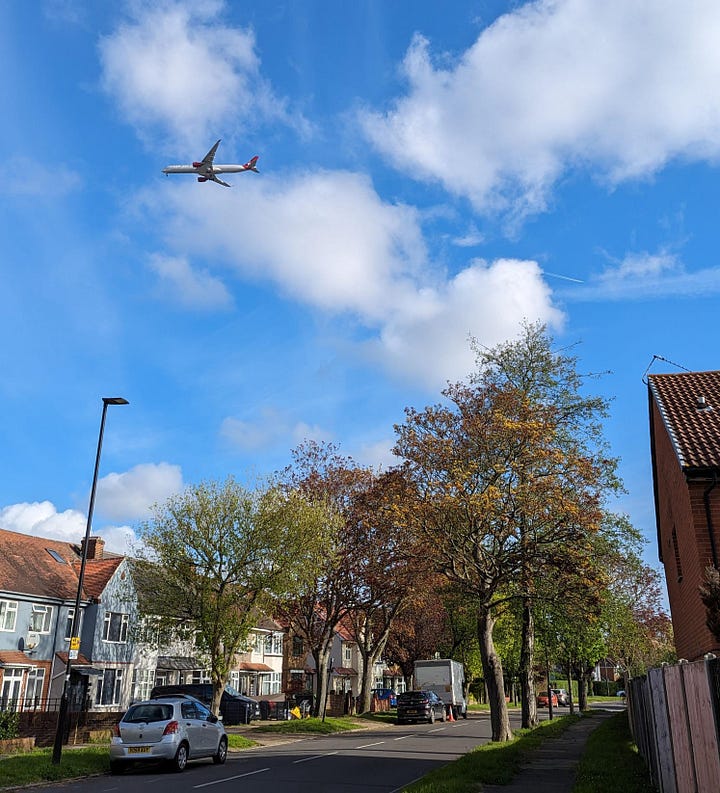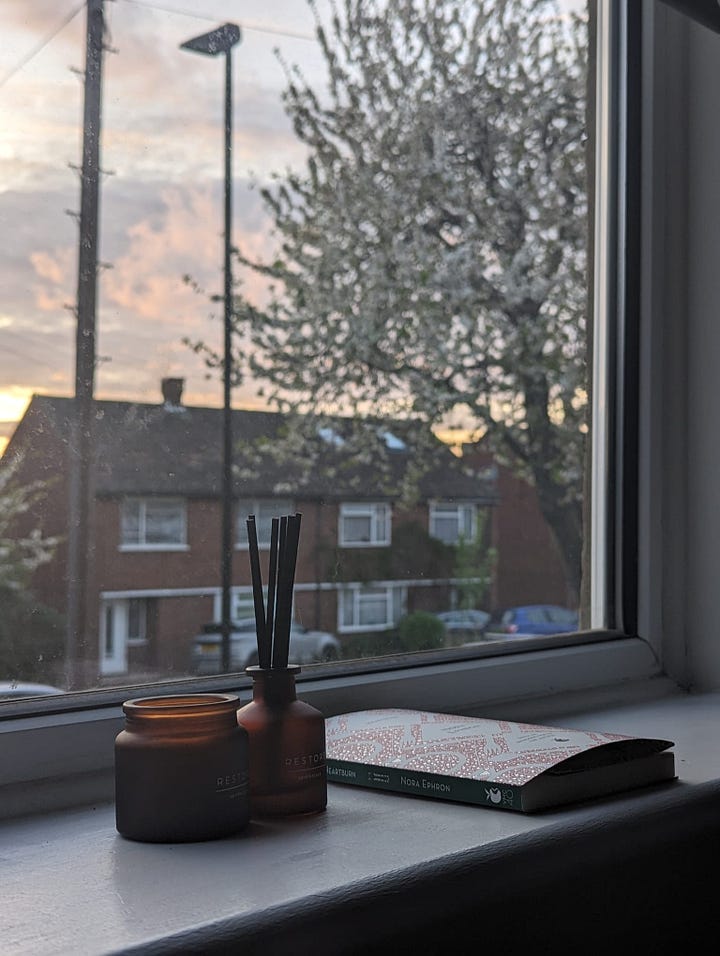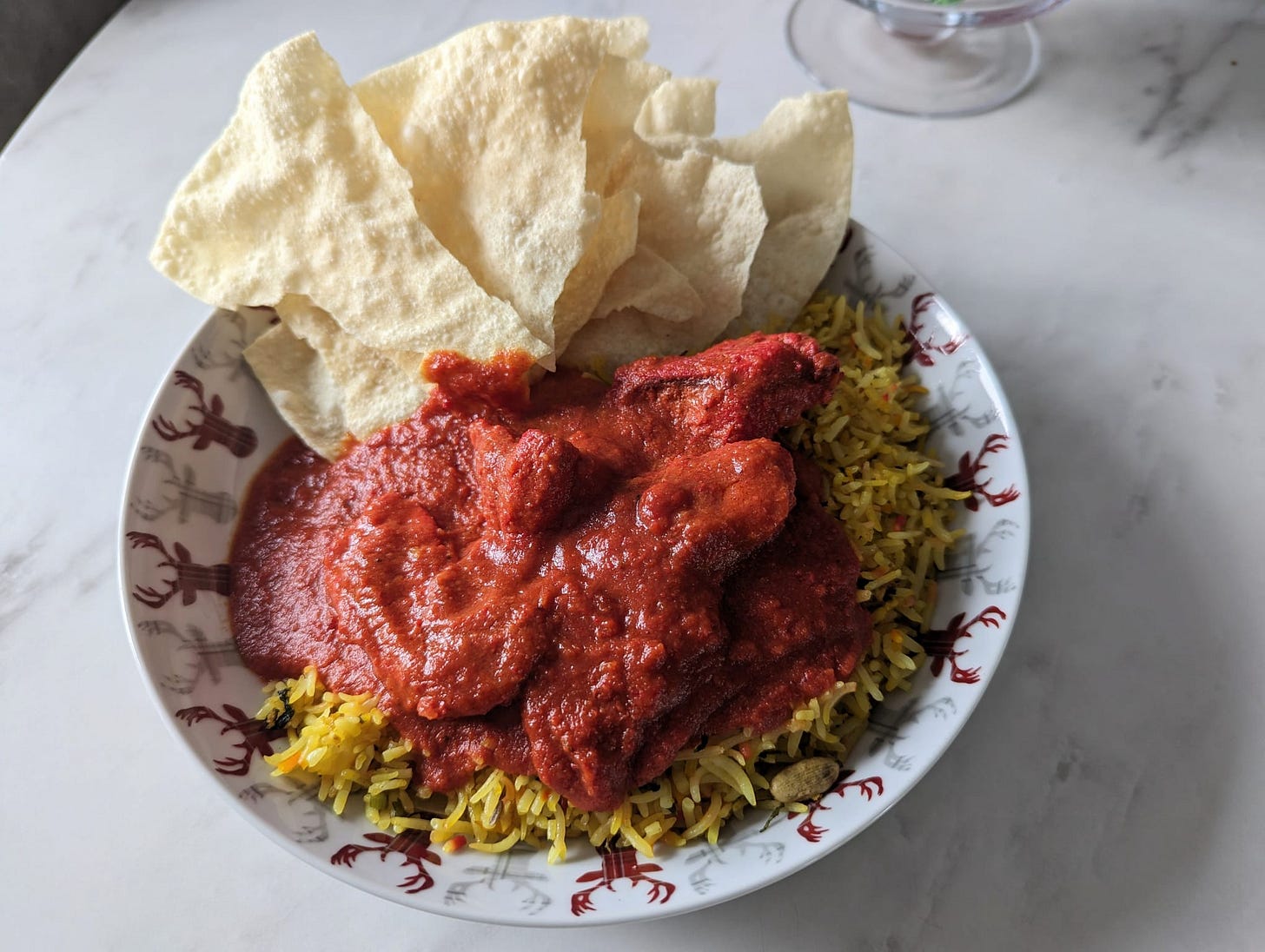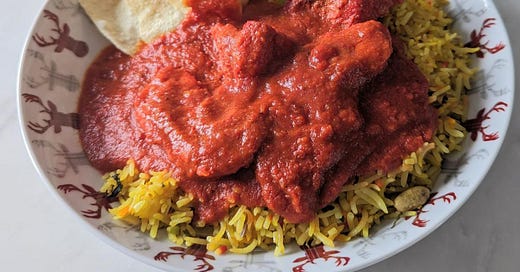This month I happened to stay as a paying guest with a British family in Southwest London.
Before I got there, a million questions were swirling in my mind about how it would pan out. Number one on the list was, “Will I be okay with the dog in the house?” Sadly, I am someone who is terrified of dogs but finds them adorable at the same time. It’s complicated. My limited interaction with dogs, often fleeting encounters on the street, involved a mutual sense of fear.
All my doubts vanished the second I saw the neighbourhood.
Spring was in full bloom. Cherry blossoms swayed in the wind and the fallen petals created whirls of magic in the air.
My host, Leila Minehan, opened the door to let me in. She led me to the room upstairs –my home for the next two weeks.
I met her partner Stuart, their son Parker, an ardent Manchester City fan, and Harley the 7-year-old French Bulldog soon after. Harley sniffed around me a few times, probably realised I was no potential harm and went back to curling up on the sofa.
Over the next few days, I started getting used to my little life there like finding my way around the new city; learning new skills at work; Harley’s big curious eyes the first thing I saw when I got back in the evening and Minehan’s radiant smile as she asked “How was work today?”


People who make you feel at ease are gifted. There’s this inherent charm they possess that doesn’t overwhelm you, but rather, helps you feel comfortable. Minehan was one such person. “I know the song Laila main Laila. Indians at a previous workplace taught me that,” she laughed.
How did someone of British birth, with Irish ancestry, come to be named Leila, which means 'night' in Arabic? “My mother is a huge Eric Clapton fan and named me after his song ‘Layla’. Even now, people ask me where I am from, because of my dark hair and the name,” she said.
I grew to admire her because of the many roles she handled in a day. She was a mother to a 10-year-old, working two jobs (as a marketing executive and real estate agent), a wife, a dog parent and a host. She was particular about keeping the house clean and tidy, something even Harley had picked up being around her so much. I was curious to know why she then started renting out the spare room, knowing fully well there would be strangers in the house. “Both Stuart and I work full-time. Our salary goes into our daily expenses and with the cost of living crisis, it has not been easy. The rent contributes to the holiday we take once a year and also goes into maintaining the house,” she explains.
The family has had guests for about 2 years now, on and off. They started doing more short-term stays for the sake of convenience. “Having a stranger in the house was initially a bit of a worry since our parents were also concerned about the idea. To be honest, it did not bother me much because I’m quite assertive and I think I’m an okay judge of character. It gets easier with time and I think it’s harder for the person coming in, to be in someone else’s house,” says Minehan.
The conversation soon steered towards other things and inevitably food– memories related to it and comfort recipes. One dish which popped up during the discussion was a shared favourite in the house- chicken tikka masala (CTM). This perked up my curiosity and I knew this was my best chance to know about the British fascination for something that sounds undeniably Indian.
“Butter chicken and chicken tikka are two of my go-to dishes. The former is mild and the creamy sauce works well with rice and naan. Tikka is more tangy and a tad bit spicier. Parker likes that best. I think the fact that it is something so flavourful, warm and filling with both meat and gravy naturally makes it an ideal choice for the English,” said Minehan.
It was Robin Cook, former British Foreign Secretary, who hailed CTM as “a true British national dish” in his 2001 speech to the Social Market Foundation, an independent public policy think-tank based in Westminster.
While Cook is famous for making it a symbol of British multiculturalism, the creation of CTM is widely credited to the late chef Ali Ahmed Aslam.
Aslam, who was born in Pakistan moved with his family to Glasgow during his childhood. He started Shish Mahal, a curry restaurant in Glasgow West End in 1964 (coincidentally celebrating 60 years this month). Aslam made CTM with Campbell’s tomato soup and a sprinkle of spices for a dissatisfied customer who complained that his chicken tikka was too dry. It made such a huge impression on him that he returned several times to have the same and it soon became the talk of the town (and later the entire country).
At this point, it is natural to ask if CTM is really an Indian dish or not. What is served in Indian restaurants in the UK is often considered a Tandoori by-product curry improvised to suit the British taste buds. Tikka (meaning pieces or chunks) is basically made by grilling boneless chicken pieces marinated in a mix of yoghurt, red chilli powder, garam masala (a powdered mix of whole spices), ginger-garlic paste and salt with a drizzle (or two) of lemon juice. Like the many versions of the dish’s origin story (some say it was invented in India while others say it was made by Bangladeshi chefs in the UK), the recipe for the masala added to the tikka has numerous avatars varying in complexity, method of preparation and spice level.
When I thought my research on this recipe would go on for another month, I came upon these words by food writer and chef Sadaf Hussain in one of his conversations with the BBC. “How food travels is magical. It could be through parallel sources. People move and they take their recipes with them, adjusting it to local palates along the way,” he said. I was also surprised to know that CTM is not the only recipe disputed over ownership, there are many iconic dishes still fought over, their history forever a delectable conundrum.

Although I had eaten chicken tikka masala in India, I wanted to try the British version. I ordered takeaway from a local Indian restaurant from where Minehan and the family had ordered before. First impression: the orange colour was blinding. It did taste great with the rice and complimentary poppadoms (also called pappadum/pappad, a deep-fried Indian cracker) they gave me, but make no mistake, it is quite different from what Indians are familiar with. I now understand why a section of Indian chefs frown upon the mention of CTM since they consider it an ‘accident’, lacking the explosion of native spices most of our curries are known for.
Nonetheless, we cannot deny the fact that it opened up a world of possibilities for the English. It heralded an era of experimenting with more authentic Indian recipes, so much so that dishes like Masala Dosa, the Goan Vindaloo and the Mughlai Korma have now become popular in the UK.
Just like how CTM brought people closer to a foreign culture, I think what Minehan does is also a great way to understand different people and their stories. It is a form of cultural exchange and I’m much grateful to her and the family for being wonderful hosts. My two weeks there flew by but it is something I will remember for a lifetime; spending spring exploring, reading and having Harley around. Cheers to a shared love for food, life and eventful food mysteries!
Food for thought:
What did I read over spring? Well to be honest, a lot of book hoarding and a lot less reading. Although, something I really enjoyed was Heartburn by Nora Ephron. Why I liked it? Well it was a hilarious account about the failing marriage of a food writer, which obviously meant, there were short recipes thrown amid the drama. A quote from the book:
“What I love about cooking is that after a hard day, there is something comforting about the fact that if you melt butter and add flour and then hot stock, it will get thick! … It’s a sure thing in a world where nothing is sure; it has a mathematical certainty in a world where those of us who long for some kind of certainty are forced to settle for crossword puzzles.”





It is remarkable to see the variations of food when it travels between cultures. Sometimes we fail to appreciate the diversity of it amongst silly squabbles pertaining to authenticity and tradition.
Loved the way you combined British life and south Asian cuisine flawlessly.❤️✨